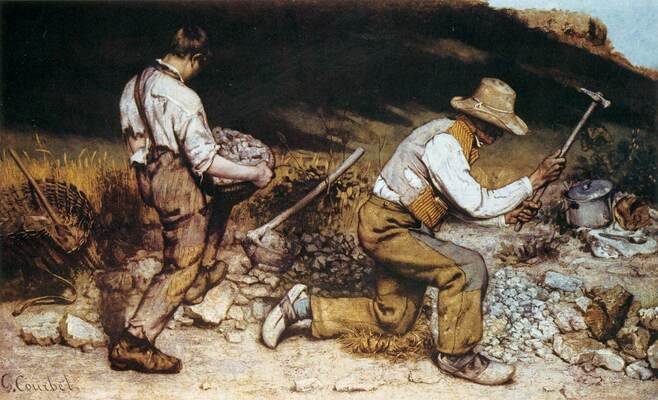Causes of the Modern Art Revolution
Not to be confused with today's contemporary art (1970s to present), the modern art period dates from the mid-nineteenth century until the 1970s. The pioneering artists of the age changed how we perceive and interpret art forever. Giants like Cezanne, Picasso, Monet, and Dali dominated the era and are still well-known. Many consider the modern art movement one of the key catalysts to progress that emerged from that time. We can say that it shaped the culture and attitudes we have today. So, how did it come about?
Pre-Revolutionary Landscape & Thirst for Change (1820s-1840s)
Before the halting beginnings of the modern art period, the reality for many artists was wildly different from that of today. Romanticism and neoclassicism reigned supreme, and many art schools refused to allow the creation of any pieces that didn't reflect their devotion to "academic art." These "approved" art styles carried many strict requirements that artists had to comply with. Fixed aesthetics, a devotion to idealism, religious fervor, intense focus on the past, and the need for each work to have an intellectual message behind it formed the strict parameters within which artists had to create. The traditions of patronage, commissions, and the wealthy using art to subtly shape politics left many feeling voiceless.
This monolithic approach, coupled with the refusal to adopt or consider changing opinions and techniques, created a form of cultural domination. Similar to the control of mass media seen in some countries today, the number of "dissenters" and opponents of this perceived artistic oppression grew. Realism is considered to be the first offshoot of the modern art movement, and established itself as the opposite to romanticism. Rejecting the ideal, it relished in the sordid, messy, lives of common people, while criticizing the carefully crafted social values of the upper classes. Beauty was all but ignored with the choice to use muted, gloomy, color palettes - an attempt to merge art and real life. Gustave Courbet, Jean-Francois Millet, and Honoré Daumier are considered to be the fathers of this artistic style.
Courbet
Liberty Leading the People Eugène Delacroix
Industrial Revolution (1760-1840s)
Apart from the increasingly loud cries for artistic freedom in the face of such tight restrictions, other factors significantly influenced the modern art revolt. It is impossible to talk about this period without emphasizing the impact of the Industrial Revolution. The move towards societies centered around industry led to profound changes in the economic, social, and cultural climate of Europe. The first steam engines, telegraph communications, photographs, typewriters, and electric generators were produced during this period. With them came the birth of the modern-day factory and, with it, the unquenchable thirst for workers. Urban populations mushroomed as new inventions changed how people lived, traveled, and the level of access to information they had. Art couldn't stay the same when the world had changed forever.
Before the invention of the paint tube in 1841 artists were constrained by their medium, having to make their own paints on a daily basis by grinding pigments into oil. Artists could only paint one color at a time, having to wait until it dried before they could proceed. These homemade batches would harden and dry within a day, having to be remade the next. The most portable form of storage at the time was a pig’s bladder tied with a piece of string. Created by John Goffe Rand, these small tin tubes topped with a screw cap gave oil paints a long shelf life and artists the freedom they needed. Small, easy to manufacture, and simple to transport, realists could comfortably take their materials directly to the scenes they wanted to capture.
The Enlightenment Movement (1637-1815)
The origins of western political ideals were built on the bedrock of the enlightenment movement, and it is essential to consider its impact when discussing the causes of the modern art revolution. Society and its conventions at that time came under intense scrutiny by the greatest minds of the day. Questioning why we did things the way we did and if they aligned with the changing attitudes became the intellectual sport du jour. The push towards creating liberal democracies saw great affinity in individuality and personal experience of the modern art movement. While encompassing a wide variety of styles and genres, modern art is underpinned by the desire of the artist to portray its subject through their own lens – a unique interpretation of that moment in time.
The Iron Rolling Mill
Here we've only dipped our toes into a vast subject stuffed with events, characters, and styles of thinking that shaped the world as we know it today. If you want to know more, have a look at our guide, "The History of Modern Art," where we go on an adventure through this period, discussing its defining characteristics, notable artists, and lasting impact.
If you want to decorate your home with pieces from this period, don't hesitate to have a look at our upcoming auction catalogue, full of many unique items!
To get content like this to your inbox, sign up to our newsletter below!




